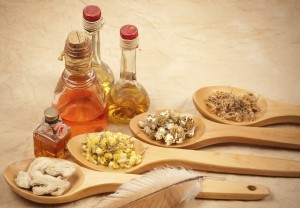 If you own any essential oils, you may have noticed quite a few of them share the same ingredient(s) as your spice rack. This may have got you wondering, how can I cook with essential oils and how can I tell if my essential oils are meant for consumption? As these oils are undiluted and extremely concentrated, they will be much more potent than any spice or ingredient commonly found in your kitchen. Not only are they more powerful, their higher concentration means they also provide a greater level of nutrients including minerals, vitamins, and more.
If you own any essential oils, you may have noticed quite a few of them share the same ingredient(s) as your spice rack. This may have got you wondering, how can I cook with essential oils and how can I tell if my essential oils are meant for consumption? As these oils are undiluted and extremely concentrated, they will be much more potent than any spice or ingredient commonly found in your kitchen. Not only are they more powerful, their higher concentration means they also provide a greater level of nutrients including minerals, vitamins, and more.
Essential Oils Frequently Used in Cooking
While this is by no means an exhaustive list, here are some of the most commonly used essential oils in recipes: lemon, orange, nutmeg, peppermint, oregano, clove, basil, lemongrass, grapefruit, and others. However, not all essential oils are meant for human consumption and should only be used topically. How Can I Tell if an Essential Oil is Safe to Consume? The fastest and simplest way to determine this is by thoroughly reading the label. If it contains any message such as “For Aromatic Purposes Only” or “Not for Internal Use” then do not try to use that essential oil in your cooking. However, if your essential oil contains supplement facts and dietary information, then you know it is safe to use in your cooking. Bear in mind, this only applies if you have taken pains to ensure you have quality essential oils. If you tried to save some money by going for a lesser known bargain brand, you may not have the best quality oils and should therefore not consume them.
If you followed the above instructions and are still unsure if your essential oil is safe for consumption, then check out the Food and Drug Administration’s (FDA) list of essential oils that are Generally Recognized As Safe (GRAS) for consumption. You can view their list here.
Cooking with Essential Oils
While you may be used to adding a teaspoon of oregano to your pasta sauce, you will surely ruin your meal by doing the same with essential oils. Always start with one drop of essential oils per teaspoon of dried herbs when following a recipe as you can always add more later if need be. This way, you are not wasting your oils nor are you rendering your meals inedible. If your instructions call for less than a teaspoon of a specific dried herb, then the surest way to get an accurate amount of your essential oil equivalent is to dip the tip of a toothpick in your essential oil and stir it in your recipe mixture or drink. Some essential oils should always opt to use a toothpick rather than a single drop as they are naturally very strong. These include cinnamon bark, clove, ginger, and nutmeg oil.
For best results, you should dilute your essential oils before using them in cooking. This will help ensure they do not overpower the meal and will help you effective disperse the flavor. The best way to dilute your essential oil is to mix it in a healthy oil, agave syrup and/or honey, or almond/rice milk. Not all recipes will allow for these methods, but if yours does use one drop of essential oil per one teaspoon of healthy oil, agave, or honey or one drop per two ounces of your drink.
Lastly, most essential oils should be added shortly before a meal is ready to serve. This is because extreme heat will evaporate your essential oils. There are a few exceptions (the stronger flavors) that work best when simmered, such as oregano and basil. Follow these instructions, and you should be well on your way to cooking and preparing delicious meals with the restorative benefits of essential oils!







